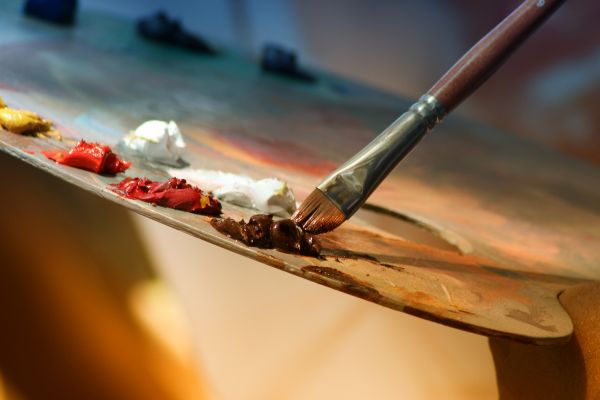Standing Out from the Crowd, Part 2: Choosing Art Direction

Every year the board game industry grows and incorporates more and more dedicated players. The last few years have been termed the "board game renaissance," and in a lot of ways it truly is the best era in gaming thus far. By the time industry magazine ICv2 reports of the most recent figures (typically 10-20% annual growth since around 2008) a plethora of new board game publishers have already sprung up. With the growth of Kickstarter, starting a publishing company has become a lot more accessible for those that don't have the financial resources to afford printing thousands of copies of a game on their own. This is great for consumers, though the immense competition requires all publishers to be on top of their game (pun definitely intended).
With this drastic industry growth, competing is becoming ever more difficult. As a publisher, there are some things you can do to stand out from the crowd, which we'll outline in this article series. This is the second article in the series (click here to read the first).

Choosing the Art Direction for Your Game
Art is one of the most important parts of publishing a game. Artwork can make or break a game — it’s the first thing potential consumers see and if it doesn’t sell them they’ll never look further into your game. There are a plethora of games on shelves at gaming stores around the world, in distribution centers waiting to be sold, in consumer’s homes, on Kickstarter and in online storefronts. What makes your game unique? Why would anyone pick it up and purchase it instead of one of the other games available?
Having great artwork is important, but it is also imperative to make sure that the art style matches the game mechanisms, game length, and the message the game is trying to evoke. Here are some tips for deciding the correct art direction for your game:
1. The artwork must look professional.
If your friend is an amateur artist, working with them on the project is not the way to go. Though there might have been a time when games with decent artwork could fund, that time is not now. In the current Kickstarter climate only games with the best artwork will succeed and that is only further emphasized for games that seek retail distribution. Paying a professional artist and making sure that the art style is one that appeals to consumers before starting is a great idea.
2. The artwork must fit with the game mechanisms and game length.
Certain art styles might be best suited for particular games. A whimsical art style might be best for a party game or a short filler game. Deeper, more realistic art is best suited for longer and more strategic games. Additionally, some art styles are commonly understood for certain genres and mechanisms like the grungy, realistic style of euro games.
Understanding the audience for your game will assist you with making sure the art direction is one that appeals to your potential consumers. If you are not certain what potential consumers want, than ask them.
3. The art must evoke the message you’re trying to convey.
As mentioned in point two above, the art needs to fit. Art will set the direction of the game and affect how consumers view it. What message do you want to come across? What feelings do you want consumers to have when they play the game? Make sure that the art experience matches the full game experience.
4. Great artwork is expensive — it’s better to get great artwork than pay less for subpar art.
There are great artists who will work within lower budgets, but they are few and far between. Paying more for higher quality art is typically a better bet. However, also realize that even if you have a lower budget you may be able to find a tremendous artist to work with within that budget – just ask.
5. Graphic design is nearly as important, if not more important than the artwork.
Graphic design can help facilitate a game's experience — this includes font selections, card layouts, rulebook design, and everything in between. Conversely, poor graphic design can truly hinder a game experience. Again, paying a professional is going to assist with bringing a game to the next level and creating the best possible product.
If you’re looking for an artist there are several resources to find artists, such as the Art & Graphic Design for Tabletop Games group on Facebook. There are also artist sites like Behance, ArtStation, and DeviantArt where you can look for artists that fit the style you’re looking for.
Finding an artist that can work on your project within your time, budget, and style constraints can be difficult and time consuming. However, it is worth every second of time spent. There are literally thousands of new games coming out every year. Standing out amongst those other games can be quite difficult, though there are steps to take in order to make sure that your project doesn’t look like all the rest.




